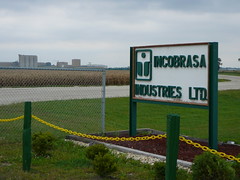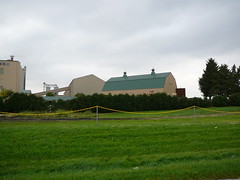Over three hundred years, the Global Heartland has seen communities struggle to avoid destruction, and new communities brought into being by migration, spiritual revelation, and political action. Communities form one of the basic building blocks of our societies. The values and ideals of communities into which we are born, or we join voluntarily, channel our desires and define us as social beings. We draw physical, economic, and emotional support from them. But communities often are exclusive, defining themselves in terms of who belongs and who does not, and within communities there are those with more power, influence and control, and those with less.
Families and communities have been important factors in the economic and political development of the region. The fur-trading economy of the 17th and 18th century, for instance, was built on family networks that often spanned the cultural divide between American Indians and European traders. The European-American farming economy that developed in the mid-19th century, likewise, drew on the labor of family members. Networks of related families often settled near each other, supporting each other with shared labor, access to credit, and leisure time entertainment. In both cases, women’s work was central to the success of the economy.
The meaning of community changed as more people moved away from farms and villages. The industrial cities of North America were too large and anonymous to be one face-to-face community. Despite this, cities harbored smaller circles of interaction—ethnic and religious neighborhoods, apartment buildings, and suburbs—where people tried to recreate older notions of community in a modern setting. And they fostered “imagined communities,” to borrow the term coined by the scholar Benedict Anderson. These imagined communities relied less on face-to-face interactions than on a shared understanding of experience and history that circulated in newspapers, books, and pamphlets.
The stories European settlers told each other about the hardships of frontier life, about their interactions with American Indians, and about the greatness of the society they were building, bound them together in an imagined community that called itself a nation. The Scots-Irish of Canada and the Yankees (Anglo-Americans who migrated west from New England) in America drew on the story of subduing a wild continent to justify their own power within Canada and the U.S. The symbols of their compelling story of nation-building—stalwart pioneers, rugged cowboys, dangerous Indians—were often adopted by newer arrivals to North America.
Imagined communities in North America had a profound impact on the history of Europe. Much as immigrants do today, those of the 19th century tried to maintain contacts with their origins by writing letters and sending money home, reading in their native language, and when possible returning home. Their lives were “transnational,” in the language of today’s scholarship, connecting old world and new despite enormous distances. Migrants living in North America, especially those from Eastern and Southern Europe, became a vital part of discussions in their home countries about the need for national independence from the German, Russian, and Austro-Hungarian empires.
Related Images"Log Cabin Meeting Houses," in Joseph Smith, Old Redstone, or, Historical Sketches of Western Presbyterianism: Its Early Ministers, Its Perilous Times, and Its First Records (Philadelphia : Lippincott, Grambo & Co., 1854), facing page 152.
"Heroism of a Pioneer Woman" in Henry Howe, The Great West: The Vast Illimitable, Changing West(New York: George F. Tuttle, 1860), facing page 157.
Chicago Indian Village, Virgil J. Vogel Research and Personal Papers, Box 17, Folder 13, Newberry Library.
Borders |
Environment |
Community |
Exchange |
Power |
Histories
 I often drive Intersate 57 between Champaign and Chicago, Illinois, and for the past 5 years or so have been intrigued by the industrial facility on the west side of the highway near Gillman. There isn't a lot of industry out that way, other than grain elevators, truck stops, and the like.
I often drive Intersate 57 between Champaign and Chicago, Illinois, and for the past 5 years or so have been intrigued by the industrial facility on the west side of the highway near Gillman. There isn't a lot of industry out that way, other than grain elevators, truck stops, and the like.

